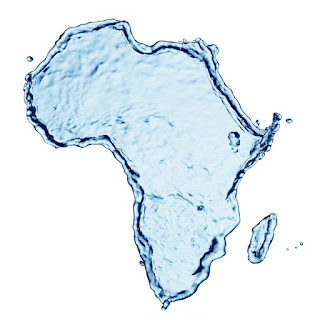Introduction to the Water Paradox in Africa
Hello and welcome to my blog! This blog will explore the water paradox in Africa through study cases of different countries, in relation to the constant environmental change we witness around us. Before I present you with different study cases showing extremes of the water paradox, we will explore the concepts and their impacts in Africa.
Water in Africa
When hearing about water in Africa, there is a consistent pre-conceived idea of this subject, which Is part of a greater idea of what Africa is. This is accurately highlighted in Binyavanga Wainaina's sarcastic work ‘How to Write about Africa,’ where the reader can easily recognize the author’s stereotypical words used of a generalised Africa associated with, poverty, tropical, against sustainable development and more importantly, ‘hot and dusty with rolling grasslands and huge herds of animals and tall, thin people who are starving.’
Now, the first key point to understand water in Africa is to dismantle the idea of seeing Africa as a whole. When observing a map of average annual precipitation in Africa (Figure 1), it is clear that there is a vast range of precipitation across the continent, which is most visible in North-West Africa with a range from 0-100mm to over 3000mm. Furthermore, a study from the Environmental Research Letters has demonstrated that the groundwater from aquifers are highly productive in many regions of Africa, where the most accessible parts are in Central Africa due to its low depth, compared to the abundant groundwater in the Sahara that cannot be accessed with a simple hand pump given its high depth. (Figure 2) With all this water mass, a clear question comes up: why is the water proportion in Africa so unbalanced?
Figure 1 : Average Annual Precipitation, 2014 Figure 2 : Aquifer productivity for Africa and approximate depth to groundwater
The water paradox in Africa
The water paradox can be described as understanding water scarcity, stress,
and imbalance of its distribution. More importantly, the paradox lies in
attempting to understand why in continents such as Africa, water management is inadequate,
despite this resource being vital. (Barbier, 2019) This can be
approached on a continental scale but also on individual countries internally.
An example would be the impact of the water paradox in Kinshasa, where the
country fails to provide 10 million inhabitants with water, despite being a
water-abundant country, due to insufficient water
disposal and distribution systems, causing severe floods and erosion in certain
regions. Now, it is widely argued that the most convenient long-term solution to
solve this issue would be to introduce modern technologies and tools that better
collect and store water, as this would be
efficient in cases of water scarcity and stress but also to reduce wider issues
such as food insecurity. However, each case study that will be introduced tends
to have specific circumstances important to discuss that prevent such
development, ranging from physical conditions to governance issues.
Environmental change in Africa
Like the rest of the world, environmental changes have a significant impact on the water trends in Africa. The most apparent consequence is global warming, where there is a substantial increase in average surface temperature in the 21st century compared 1901-2000. (Figure 3) These impacts, primarily imposed by climate change, increases the pressure on water sources worldwide, and is worsened by the rapidly growing global population. Furthermore, environmental changes have require significant economic funds, as it is estimated that climate-related disasters cost the worldwide economy $329 billion dollars in 2021, being the most expensive year recorded. It is important to note that many countries in Africa endure the largest economic losses due to weather related events, despite accounting for less than 3% of the greenhouse emission and climate crisis since the industrial era. This clearly demonstrates the climate injustice in Africa that is truly existing worth mentioning.
Figure 3 : Yearly surface temperature compared to the 20th-century average from 1880–2021. Blue bars indicate cooler-than-average years; red bars show warmer-than-average years.
As a result of
these notable impacts environmental change causes the water trends, it is
important to view this subject as a defining factor on the future impacts water
will have in Africa. Furthermore, I expect to have many different subjects such
as food, politics and more to be involved when discussing the water paradox in
relation to environmental change in Africa. This can also lead to subjects that
can be more accurately studied that will be mentioned in the upcoming posts.



Strong initial post giving an outline of water availability in Africa and the issues surrounding this. Look forward to seeing more posts!
ReplyDeleteThank you for your comment! I've really enjoyed doing this project and learning about different study cases.
DeleteHi Lucas,
ReplyDeleteThis is such an interesting overview post! I think your appreciation of the different scales of climate impact on water availability and the different management and distribution isses at each of these scales is really interesting, and I am looking forward to you exploring each of these scales as you continue the blog!
Thank you for your comment! At first looking at different scales got confusing but it then helps better understand the water paradox in Africa
Delete